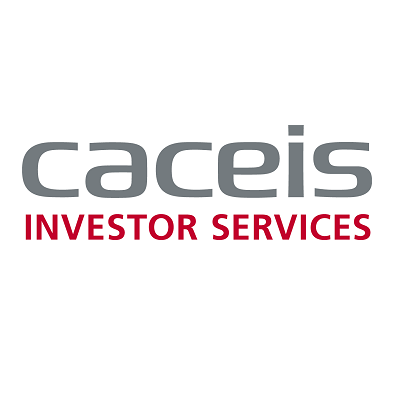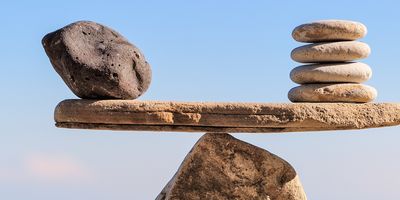The financial services industry is on the cusp of a major technological transformation, which will lead to innovative evolution and creates exciting new opportunities for pension schemes. In this new era, the value of custodians will be more recognised. Arnaud Misset, Chief Digital Officer at CACEIS, unpacks blockchain and what lies ahead.
Changing everything
Tokenisation of assets involves the digital representation of physical assets on distributed ledgers, or the issuance of traditional asset classes in tokenised forms.
Digital assets and distributed digital ledger technology changes everything.
 It means you can manage and exchange assets globally in real time and it opens up operational efficiency from trade settlement to cash payments – today, these tasks involve verification by a central body, which can be time consuming. The decentralised nature of blockchain changes that, and will also create efficiencies in record keeping and the delivery of funds. These are some of the opportunities that will be open to pension schemes.
It means you can manage and exchange assets globally in real time and it opens up operational efficiency from trade settlement to cash payments – today, these tasks involve verification by a central body, which can be time consuming. The decentralised nature of blockchain changes that, and will also create efficiencies in record keeping and the delivery of funds. These are some of the opportunities that will be open to pension schemes.
We are also seeing the emergence of tokenised bonds, which have advantages through accessibility and liquidity, with potentially lower fees and quicker settlement times. It’s still early days, but the impetus is already there.
Tokenisation also enables fractional ownership, which can improve liquidity and open up access to private markets and illiquid investments – an area that is seeing increasing demand amongst pension schemes.
Inside blockchain
In short, Blockchain is an information technology protocol that facilitates the process of recording transactions and tracking assets.
Blockchain organises data in blocks. It means every transaction is logged into a block and is then validated. Once another transaction occurs, there will be another block that will be linked to the previous one. It will include some components of the previous block. Why is this important? It means every block is linked to the other and the validation mechanism makes it almost impossible to break the chain. The longer the chain is the stronger it is, which is why blockchain is considered tamper-proof. It represents a shared record of the truth, and no participant can change or tamper with the transaction.
Tokenisation is the process of converting an underlying asset into a digital token – this means the ownership of the asset is digitalised. It’s possible to tokenise any asset. The different types of tokens can include:
Stable coins: Cryptocurrency whose price is fixed, often pegged or tied to government-issued currency.
Securities tokens: Digital-assets for financing or investment. They represent a digital form of financial instruments or cash certificates. These should being operational efficiency to the market.
Non-fungible tokens (NFT): This is a growing area of interest in wealth management. An NFT is a cryptographic token - a digital identifier that might be linked to ownership of a piece of art or music.
Central bank digital currency (CBDC): Digital currency issued, controlled and regulated by the central bank. A CBDC has the same functions as a traditional currency.
A protocol is used to validate the authenticity of transactions on the blockchain, which is a ‘consensus mechanism’. For example, if you purchase a tokenised security and transfer it into your wallet, everyone must agree that you own that security. This forms the governance structure of the blockchain. ‘Proof of work’ and ‘proof of stake’ are the two major consensus mechanisms used to verify transactions in the blockchain. ‘Proof of stake’ is the younger of the two and uses much less energy consumption.
The important role of custodians
In the digital asset space, asset security and the ease of transacting will reinforce the value of custodians as they have a key role in meeting these goals.
Custodians play an important role in the value chain to the widespread adoption of digital assets. They will help manage the use of digital assets by harnessing their existing expertise.
They will operate in a similar fashion to the way they approach traditional assets today, which is building clearly defined controls and procedures for the safekeeping of assets. Custodians already have significant experience in this area, which can be translated into the digital world – they can apply the same rigour to digital assets as they do today with traditional assets.
In the digital space, a custodian’s role will evolve to safekeeping a private key that provides access to the underlying assets. This is an important distinction. Controlling access to private keys will be paramount for the security of the underlying assets, ensuring that it cannot be accessed by another party – and providing the same level of security as for traditional assets.
Practical considerations also need to be embedded into the tokenisation of financial instruments, such as the ability to facilitate corporate actions. This is likely to be in the form of ‘smart contracts’ – programmes stored in the blockchain that run when predetermined conditions are met. It means custodians need to develop a strong network of partners that can replicate what is done in the traditional space to digital assets – such as corporate actions and income.
In the longer term, the very nature of digital assets will reinforce the value of custodians as guardians of asset security.
Central bank digital currencies will change everything, along with regulation
The emergence of central bank digital currencies is a really important step. The Bank of England, for example, is looking at the case for a central bank digital currency, as are other central banks around the world. This will drive greater adoption of blockchain. Today, there is still a difference between delivery of assets and payment. Cash is still managed traditionally in the blockchain.
A central bank digital currency will change this as everything can then be managed on the blockchain.
Regulatory activity around digital assets is also intensifying and evolving – and potentially will become less fragmented. Not surprisingly, regulators are focused on consumer and investor protections, along with risk policies, procedures and controls.
Furthermore, a key part missing is the secondary market, which is limiting its expansion of digital assets. However, in Europe, we are seeing significant steps forward with the development of the European Union DLT Pilot Regime, which will lead to a trading facility, so tokenised fund shares can be bought and sold in the secondary market.
Blockchain is not new in driving operational efficiencies.
Blockchain and digital asset technologies to drive operational efficiencies is not something new. For example, Carrefour, the European food supermarket group, has gradually integrated blockchain technology to store information about a product, its origin, where it was farmed and how it was produced and where the product was sold. Today, this is giving consumers more transparency about some of the products they buy.
Building awareness and becoming prepared
There are many paths ahead.
The financial services industry in general will have to grapple with the introduction of blockchain technology over the coming years. It’s clear that the speed at which digital assets develop will largely be in the hands of regulators and the creation of central bank digital currencies – and developments in this area are making quick progress.
We might also see behavioural changes with institutional investors, which will drive demand for digital assets. At the beginning of this article, we cited that over 40% of asset owners had a strategy around tokenisation,
And how do we grapple as an industry with this innovative evolution? Education on digital assets is going to be key across core functional areas. This includes compliance and risk, and with those in other oversight functions, such as fund board and pension scheme trustee boards.




